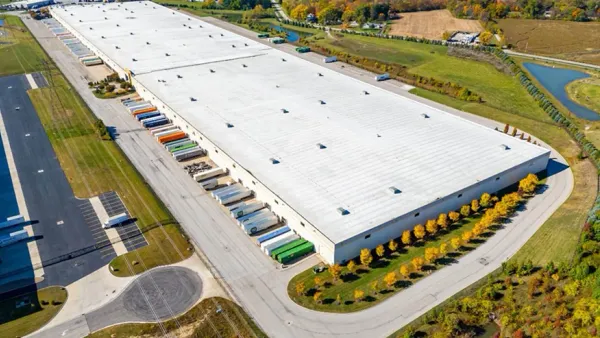At Opendock we have been fortunate enough to work with thousands of warehouses ranging from stand-alone locations with five dock doors to enterprise distribution networks with 50+ locations and thousands of dock doors. Surprisingly, across all the variations of size, volume, service, and industry, these warehouses have many of the same challenges.
Sometimes it may be unclear if your warehouse needs dock appointment scheduling or what the immediate impacts on your operations will be. To help, here are the five reasons why you need a dock appointment scheduling system:
Monday is your busiest day
Monday is usually the busiest inbound day for a warehouse and can be even busier if the warehouse is not receiving on Saturday or Sunday. Trucks will oftentimes arrive throughout the weekend, lining up so they can be unloaded first thing Monday morning. This is often caused by in first come first served facilities where drivers know if they are not near the front of the line it could cost them a day of transit.
Appointment scheduling can help spread appointments throughout the week and prevent the overload of traffic on Mondays. Allowing carriers to schedule their own appointments online helps them better plan their routes and eliminate the need to arrive early to ensure they can pick up or deliver in a reasonable amount of time.
Appointment scheduling happens over the phone or in e-mails
Using your warehouse team members to answer scheduling phone calls and e-mails throughout the day is inefficient and can be very frustrating. This experience is equally as painful for the carriers and brokers. It's time-consuming for them to be on hold, to have to call multiple times throughout the day to get an answer, or to wait for an e-mail reply the following day. Warehouse teams, carriers, and brokers all want to know available appointment times and schedule as quickly and easily as possible.
It's much easier for warehouses to give carriers and brokers a link to their appointment portal and let them schedule upcoming appointments at their convenience. No longer do they have to wait for a callback or e-mail. And warehouse teams can more efficiently manage their dock appointments and plan their resources.
It feels like you are paying detention fees on every single shipment
Warehouses compensate carriers for excessive wait times with detention fees. Unfortunately, detention fees are a consequence of inefficiency - and carriers do not want to incur detention any more than warehouses. Long dwell times at warehouses result in downstream impacts to the next scheduled shipments, and the detention fees typically do not offset the costs of a missed pickup or delivery.
Appointment scheduling helps spread truck arrival times across hours of operations. This prevents multiple trucks from queuing up at the same time and incurring long wait times. A scheduling tool also allows warehouses to check in and check out trucks to know if they are arriving on time and how long they are at the facility. This helps with detention fee claims by providing supporting information.
Regular safety incidents occur during loading and unloading
First come first served facilities can create a lack of visibility to the daily workload. There are large ebbs and flows of resources needed to keep up with incoming trucks. When warehouse teams get backlogged, they have to work quickly to stay on schedule. Sometimes working faster can lead to going off process or safety incidents.
Maintaining more consistent and continuous work throughout the day can keep teams at peak productivity without creating unnecessary surges. An incoming truck schedule allows teams to plan their day and adjust resources during busy periods to ensure they are equipped to handle the workload safely and efficiently.
The warehouse always feels either understaffed or overstaffed
Labor planning is one of the most challenging components of operating a warehouse because so many variables need to be considered. In a warehouse without dock scheduling, there is limited to no visibility of inbound and outbound delivery traffic. Without knowing the number of trucks, the amount of product, or types of product arriving, it's nearly impossible to build an efficient schedule. Instead, warehouse leaders need to make their best guess or are forced to be inefficient by always having to have enough labor available to handle maximum demand.
Gaining visibility to upcoming workload based on truck appointment schedules can help provide a foundation for resource planning. Taking a proactive approach to availability can also help warehouse leaders block out time for repairs, maintenance, training, or team meetings without concern of disrupting operations.
If any of these five reasons resonate with you (maybe they all do!), it may be time to consider moving to online dock scheduling. It solves many of the common problems warehouses face. When a warehouse operates more efficiently, everybody wins. Warehouses can better maximize throughput, while carriers can minimize wait times. If you'd like more information on how dock scheduling can help your warehouse, visit us at try.opendock.com.










